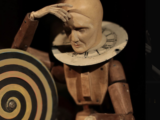The History of Animation: A Journey through Europe, Japan, and the United States
Animation, as an art form and medium of communication, has developed differently in various parts of the world. Here, we explore the beginning of European, Japanese, and American animation, following a chronological structure and tracing influences, innovations, and stylistic differences.
1900–1930: The Origins
United States
- Winsor McCay was one of the pioneers with Gertie the Dinosaur (1914), one of the first animated films featuring a “living” character.
- Fleischer Studios introduced iconic characters such as Betty Boop and Koko the Clown.
- In 1928, Walt Disney revolutionized animation with Steamboat Willie, the first synchronized sound cartoon starring Mickey Mouse.
Japan
- The earliest Japanese animated shorts date back to 1917, such as Namakura Gatana by Jun’ichi Kōuchi.
- Early Japanese animation was heavily influenced by traditional art styles such as ukiyo-e and kabuki theater.
🇪🇺 Europe
- In France, Émile Cohl created Fantasmagorie (1908), considered one of the very first animated films in history.
- In Germany, Expressionism influenced works such as The Adventures of Prince Achmed (1926) by Lotte Reiniger, created using silhouette animation.




